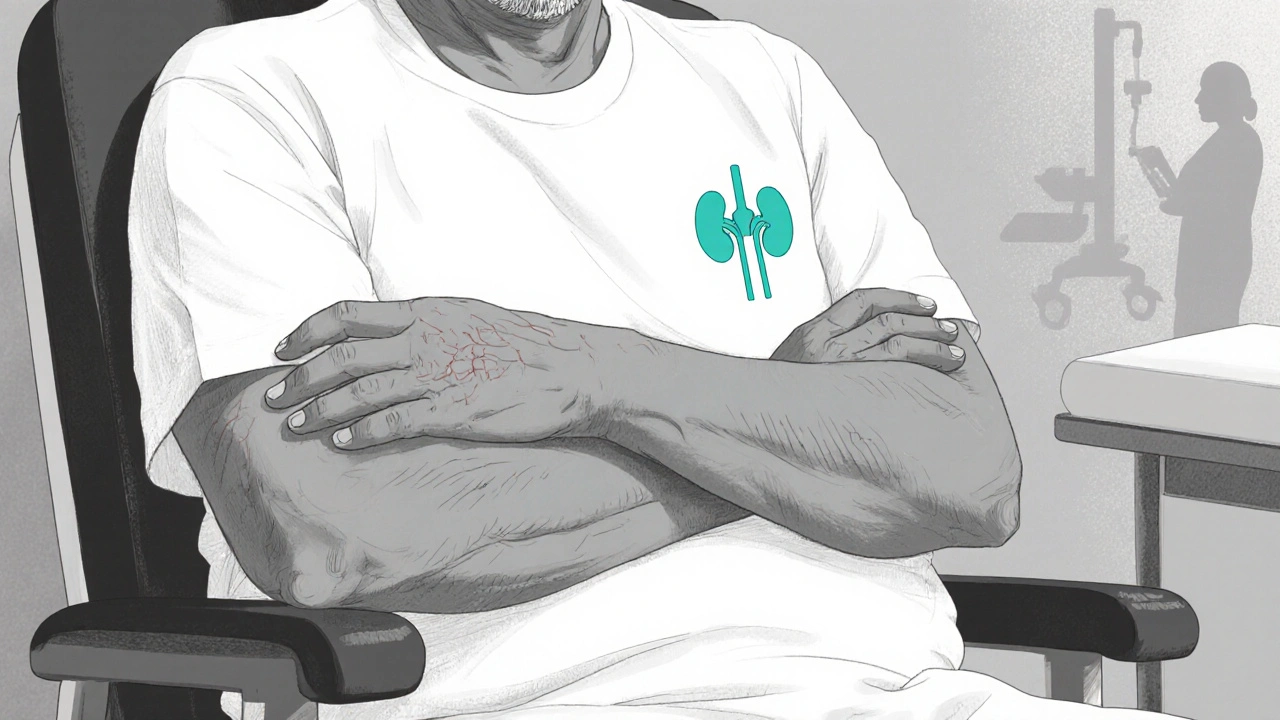Pruritus in Chronic Kidney Disease: Causes, Treatments, and Management
When dealing with pruritus in chronic kidney disease, a relentless itching condition that shows up in many patients with advanced kidney failure. Also known as uremic pruritus, it often flares during dialysis, the machine‑based therapy that removes waste when kidneys can’t and can ruin sleep, mood, and daily activities. The itch stems from a mix of uremic toxin buildup, dry skin, and altered nerve signaling, creating a vicious loop: toxins trigger itch signals, scratching damages the skin barrier, which lets more irritants in, and the cycle repeats. Understanding this loop is the first step to breaking it, so you can stop treating the symptom alone and start addressing the underlying causes.
Why It Happens and How to Stop It
The root players include chronic kidney disease, a progressive loss of kidney function that leads to metabolic disturbances such as high phosphate, calcium‑phosphate imbalance, and elevated parathyroid hormone. These biochemical shifts raise histamine release and activate opioid receptors in the skin, both of which fuel itching. Meanwhile, the skin’s natural moisturizing factor dwindles, leaving the surface cracked and hypersensitive. Antihistamines can block one pathway, but they often need to be paired with moisturizers, gentle cleansers, and sometimes opioid‑receptor antagonists like naltrexone to hit the itch from multiple angles. Phototherapy, especially narrow‑band UVB, has shown real benefit for stubborn cases, while adjusting dialysis parameters—like using high‑flux membranes or increasing session length—can lower toxin load and calm the nerves. Each of these tools tackles a different attribute of the problem, turning a single‑focus approach into a comprehensive plan.
Putting the pieces together, effective relief means: (1) correcting metabolic imbalances with phosphate binders or vitamin D analogs; (2) protecting the skin barrier with fragrance‑free emollients applied right after bathing; (3) using targeted meds—first‑line antihistamines, then if needed gabapentin, pregabalin, or low‑dose naltrexone; and (4) optimizing dialysis settings to remove pruritic substances more efficiently. The combination works because it hits the itch’s three main triggers: chemical irritants, nerve hyper‑excitability, and skin dryness. Below you’ll find a curated set of articles that dive deeper into each strategy, share real‑world dosing tips, and explain how to monitor progress without over‑medicating. Ready to see which approaches match your situation? Keep scrolling to explore practical guides, patient stories, and the latest research that can help you turn chronic itching into a manageable, even occasional, nuisance.
Itching and Kidney Disease: Causes, Symptoms & Relief
- Laura Ledas
- Oct, 12 2025
Learn why itching often signals kidney disease, how uremic pruritus develops, and practical steps-from skin care to medications-to ease the discomfort.
Learn More